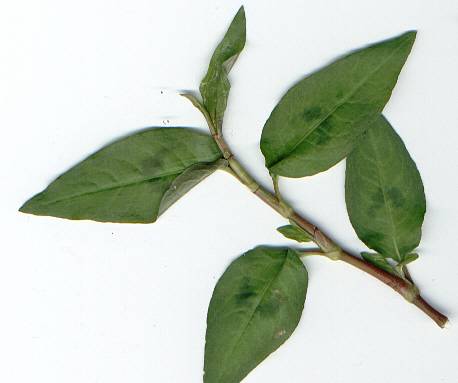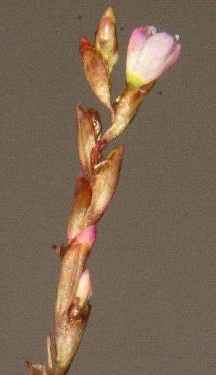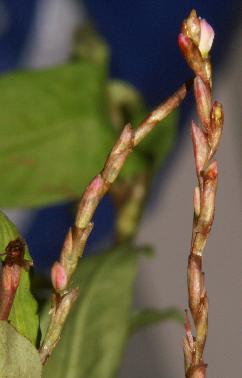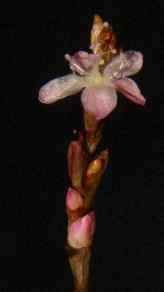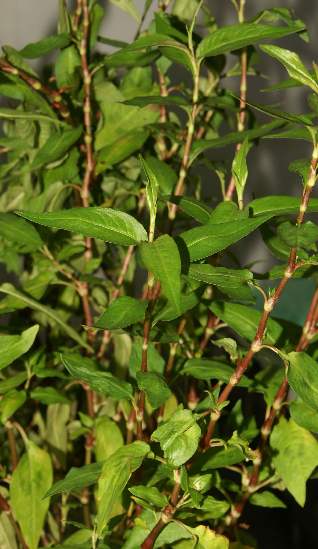
|
| Vietnamese coriander plant |
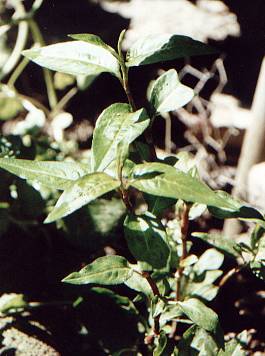
|
| Vietnamese coriander (sterile plant) |
In Vietnam, particularly in the South, fresh herbs are a conditio sine qua non of food. A typical South Vietnamese noodle soup (pho [phở]) is based on broth (often from chicken, pork or fish, or a combination therefrom) with a variety of different ingredients, which usually include small meat pieces, boiled and raw vegetables, fish balls, young onion greens and fried garlic slices. The soup is served with a large amount of additional flavorings, which are left to the diner to finalize his soup: lime wedges, mustard paste, nuoc mam [nước mắm] fish sauce, fresh red chile slices and a host of herbs which are dipped into the soup using chopsticks and eaten together with a spoonful of soup. Similarly, stir-fried meat and vegetables are never seen without generous amounts of chopped herbs, and the same holds for the tasty Vietnamese sandwiches, a colonial heritage. Since Vietnamese cooking is far less spicy than, for example, Thai cooking, the herbs are indispensable for the true taste of Vietnam.
The herb far most common for this purpose is coriander, whose ubiquitous occurrence in Vietnam tends to frustrate Western tourists; second in demand are long coriander and Vietnamese coriander. Occasionally, mints, the chameleon herb, perilla and basil are used. A herb limited to special applications is the rice paddy herb. In Southern Vietnam, herbs are of more importance than in the Chinese-influenced North. See Vietnamese Cinnamon on North Vietnamese noodle soups.
In Malaysia, Vietnamese coriander is a common garnish for many kinds of foods,
only one example of which is the soupy noodle dish laksa,
which is native to the entire Malaysian peninsula, but most often
associated with the cuisine of Singapore. Singapore laksa
differs from related foods prepared in Malaysia mostly by the use of
coconut milk, which turns the originally clear
soup into a creamy, rich curry
dish.
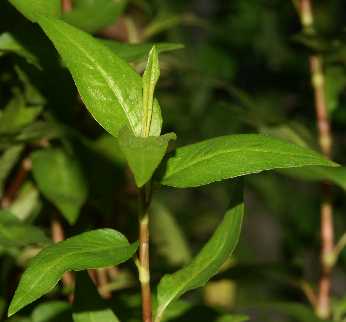
|
| Vietnamese coriander shoot |
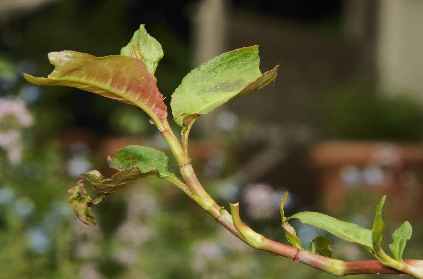
|
| Vietnamese coriander sprig |
The native cuisine of Singapore is often referred to as Nonya cuisine,
where Nonya
refers to a people of mixed Malay and Chinese ancestry
also known as strait Chinese
; the correct form is
peranakan (baba for males and
nyonya for females). Their settlement in Malacca (South
Malaysia and Singapore) goes back to the voyages of the Chinese admiral
Zheng He [郑和]
in the early 15.th century. Vietnamese coriander plays an important rôle
in their cuisine. Singaporean laksa is made of boiled meat
(chicken is most common), sea food (fish, crabs) and a
variety of vegetables (bean sprouts, celery stalk,
cucumber). The seasoning is due to a spice paste (bumbu) made
from lemon grass, fresh
turmeric, galanga,
chiles, garlic
and shrimp paste (balacan, trassi).
Before serving, chopped Vietnamese coriander is
sprinkled over the bowl liberally; according to educated opinions from
Singapore, regular coriander would be a poor
surrogate.
Outside of South East Asia, Vietnamese coriander is virtually unknown. The only exception
to this is Manipuri cooking, which merges characterstics of both South East and South Asian
cuisines. See chameleon leaf for more.
